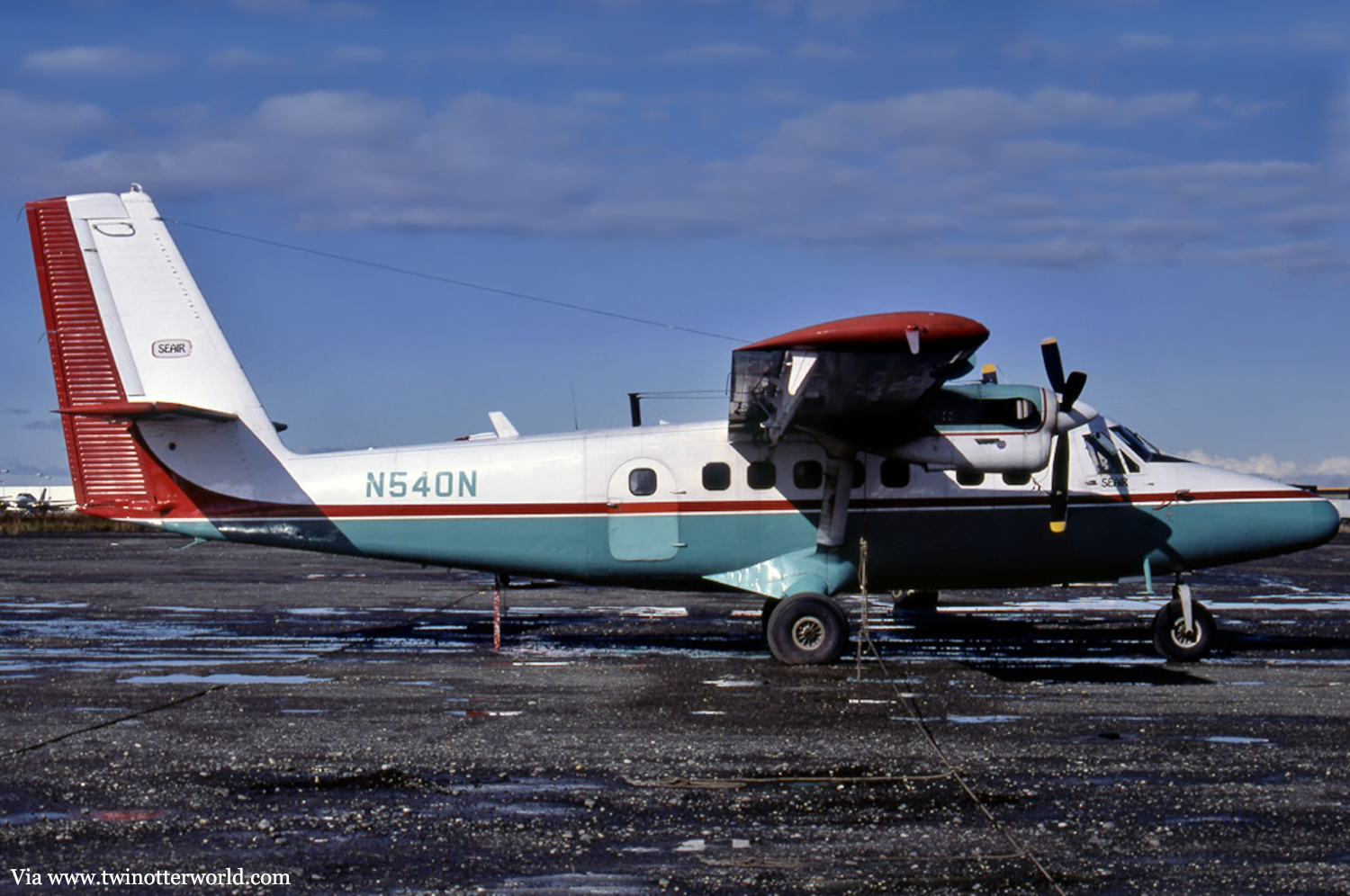Crash of a De Havilland DHC-6 Twin Otter 300 in Kaktovik
Date & Time:
Mar 12, 1985 at 0015 LT
Registration:
N540N
Survivors:
Yes
Schedule:
Prudhoe Bay – Kaktovik
MSN:
401
YOM:
1973
Crew on board:
2
Crew fatalities:
Pax on board:
2
Pax fatalities:
Other fatalities:
Total fatalities:
0
Captain / Total hours on type:
2098.00
Aircraft flight hours:
13652
Circumstances:
Aircraft crashed during missed approach to temporary winter landing strip. Aircraft hit in steep nose down attitude. Marginal weather conditions prevailed, with icing reported. All four occupants were injured, both pilots seriously.
Probable cause:
Occurrence #1: in flight collision with terrain/water
Phase of operation: go-around (vfr)
Findings
1. (f) terrain condition - snow covered
2. (c) flight manuals - not followed - pilot in command
3. (f) overconfidence in aircraft's ability - pilot in command
4. (f) inadequate surveillance of operation - company/operator mgmt
5. (f) weather condition - fog
6. (f) weather evaluation - inaccurate - pilot in command
7. (f) company-induced pressure - company/operator management
8. (f) inadequate surveillance of operation - faa (organization)
9. (f) light condition - dark night
10. (f) in-flight planning/decision - poor - pilot in command
11. (f) expectancy - other person
12. (f) insuff standards/requirements, operation/operator - company/operator mgmt
13. (f) light condition - dark night
14. (f) weather evaluation - inaccurate - pilot in command
15. (f) fatigue (flight and ground schedule) - pilot in command
16. (c) weather condition - icing conditions
17. (f) flight into known adverse weather - intentional - pilot in command
18. Fatigue (flight and ground schedule) - copilot/second pilot
19. (f) wing - ice
20. (f) anti-ice/deice system - not used - pilot in command
21. (c) altitude - inadequate - pilot in command
Phase of operation: go-around (vfr)
Findings
1. (f) terrain condition - snow covered
2. (c) flight manuals - not followed - pilot in command
3. (f) overconfidence in aircraft's ability - pilot in command
4. (f) inadequate surveillance of operation - company/operator mgmt
5. (f) weather condition - fog
6. (f) weather evaluation - inaccurate - pilot in command
7. (f) company-induced pressure - company/operator management
8. (f) inadequate surveillance of operation - faa (organization)
9. (f) light condition - dark night
10. (f) in-flight planning/decision - poor - pilot in command
11. (f) expectancy - other person
12. (f) insuff standards/requirements, operation/operator - company/operator mgmt
13. (f) light condition - dark night
14. (f) weather evaluation - inaccurate - pilot in command
15. (f) fatigue (flight and ground schedule) - pilot in command
16. (c) weather condition - icing conditions
17. (f) flight into known adverse weather - intentional - pilot in command
18. Fatigue (flight and ground schedule) - copilot/second pilot
19. (f) wing - ice
20. (f) anti-ice/deice system - not used - pilot in command
21. (c) altitude - inadequate - pilot in command
Final Report:



